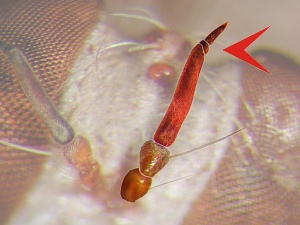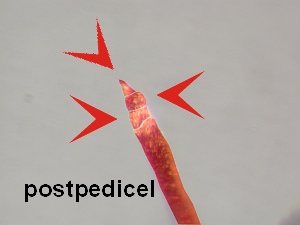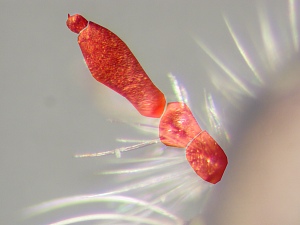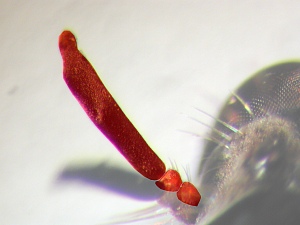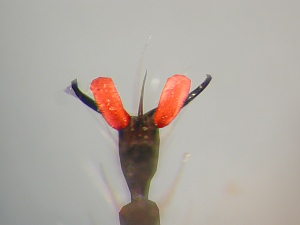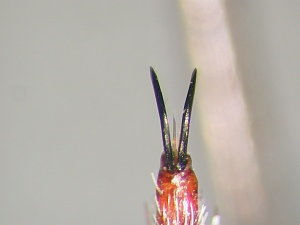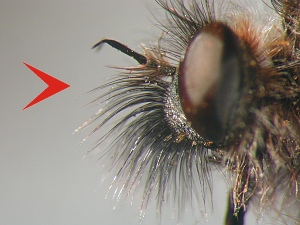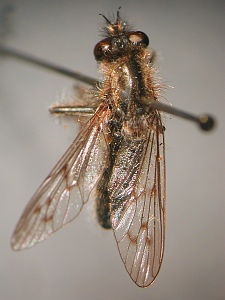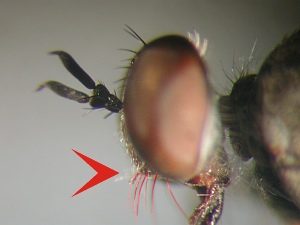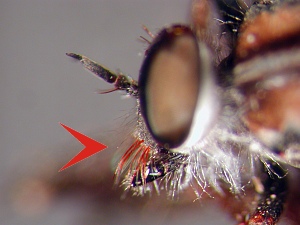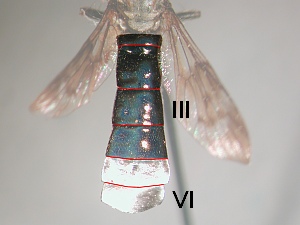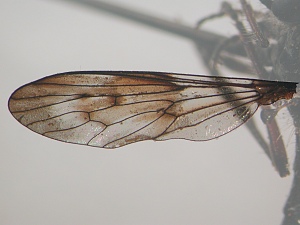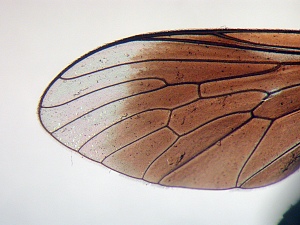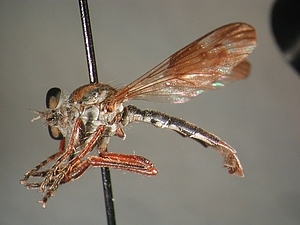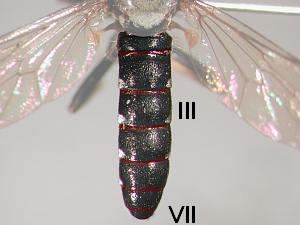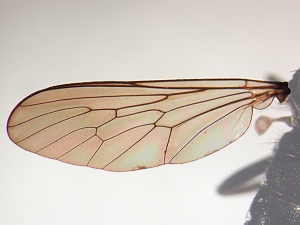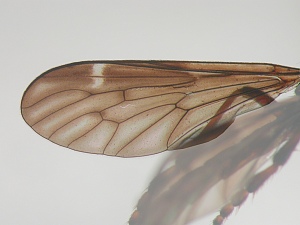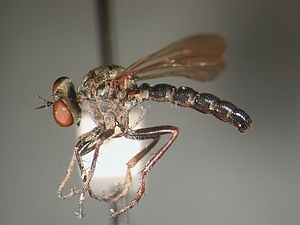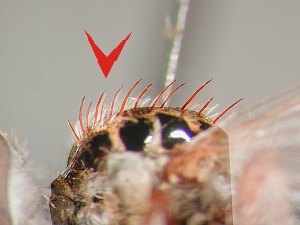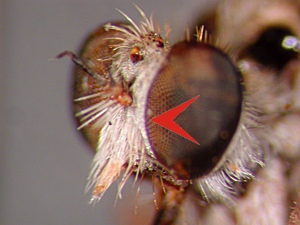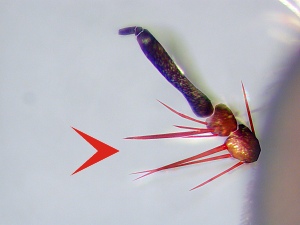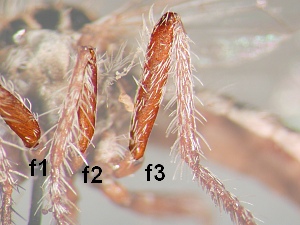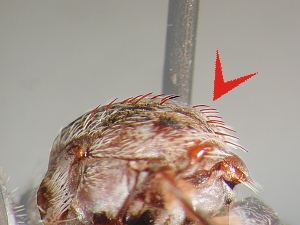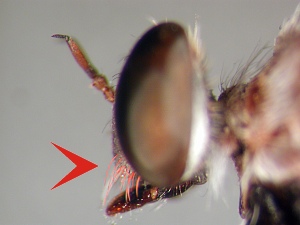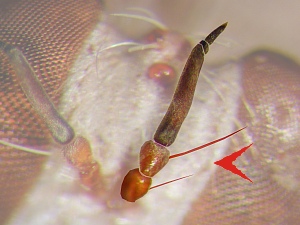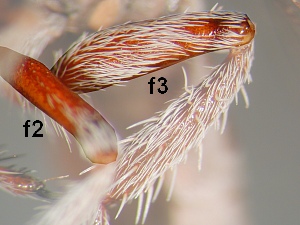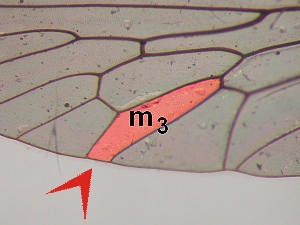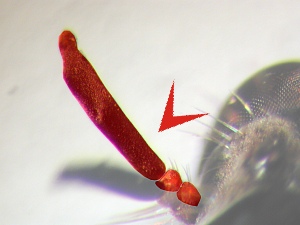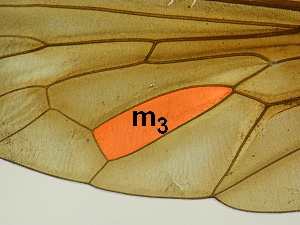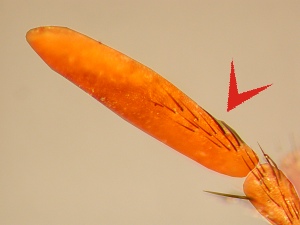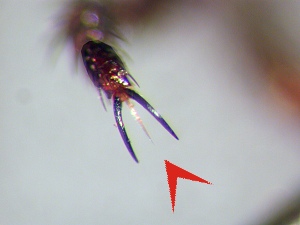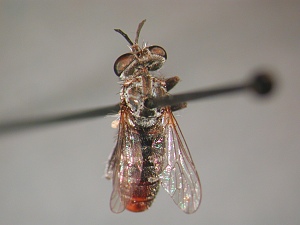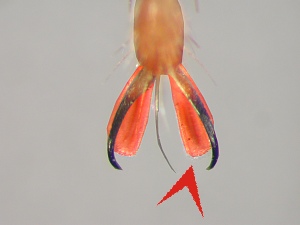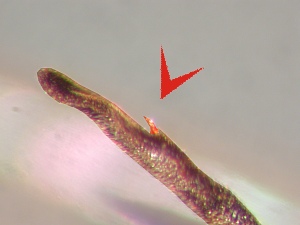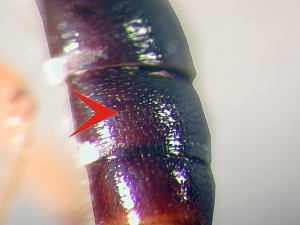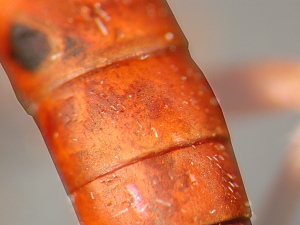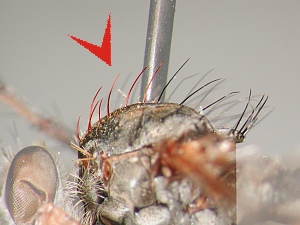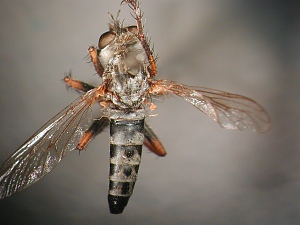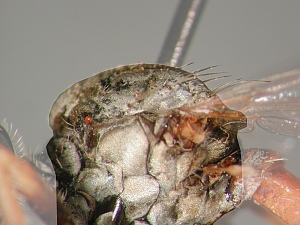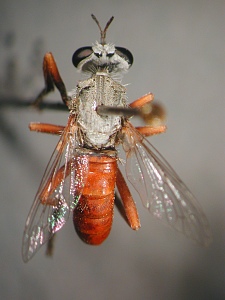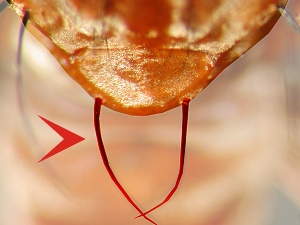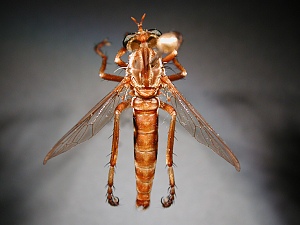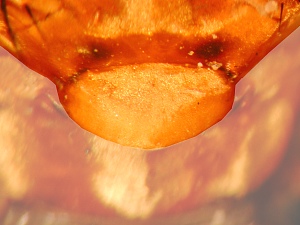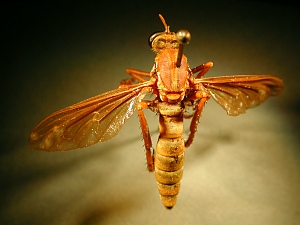Apocleinae
Asilinae
Dasypogoninae
Dioctriinae
Laphriinae
Laphystiinae
Leptogastrinae
Ommatiinae
Stenopogoninae
Stichopogoninae
Trigonomiminae
Dasypogoninae
References: Artigas, J.N. & Papavero, N. (1988): The American genera of Asilidae (Diptera): Keys for identification with an atlas of female spermathecae and other morphological details. II. Key to the genera of Dasypogoninae Macquart, with descriptions of new genera and species and new synonymies. - Gayana. Zoologia. Universidad de Concepcion, Instituto Central de Biologia 52(3-4): 199-260; Concepcion.
In addition:: Back, E.A. (1909): The robber flies of America, north of Mexico, belonging to the subfamilies Leptogastrinae and Dasypogoninae. - Transactions of the American Entomological Society 35: 137-400, pl. 2-12; Philadelphia.
| Pulvilli present. |
| |
| Pulvilli entirely absent. |
|
| Mystax dense, occupying entire face, bristles longer at lower margin . . . . . Comantella Curran, 1923 | ||
| Mystax thin, reduced to subcranial margin, with at most sparse hairs above mystax, and decreasing in density towards base of antennae when present. |
|
| Male abdomen with only six visible segments, the last two (5 - 6) widened, flat, spatulate, covered with dense silvery pollen. Wing, in both sexes, spotted brown at crossveins and bifurcations, or brown almost to apex, including bifurcation of R4 and R5 . . . . . Nicocles Jaennicke, 1867 | ||
| Male abdomen with seven visible segments, the last two (6 - 7) not modified as above. Wing hyaline or basal two-thirds brown, not spotted as above, or entirely infuscated . . . . . Cophura Osten Sacken, 1887 |
| Dorsocentral bristles erect and extending to mesonotal declivity. Face with dense fringe of long, adjacent, tectiform, drooping bristles, reaching nearly up to base of antennae. Scape and pedicel with stout, long, blunt bristles. Diameter of all femora uniform . . . . . Omninablautus Pritchard, 1935 | ||
| Dorsocentral bristles recumbent when present, confined to mesonotal declivity. Mystax composed of hair-like bristles, never as above. Scape and pedicel without long, stiff, ventral bristles. Diameter of hind femora 1.3 - 1.5 times diameter of middle femora . . . . . Hodophylax James, 1933 |
| Pulvilli absent . . . . . Parataracticus Cole, 1924 | ||
| Pulvilli present. |
|
| Postpedical with a dorsal incision near its middle or apical third bearing a spine. Abdomen notoriously punctate . . . . . Taracticus Loew, 1872 | ||
| Postpedical always with a minute apical spine. Abdomen predominantly smooth. |
|
| At least three pairs of presutural dorsocentral bristles present . . . . . Lestomyia Williston, 1884 | ||
| No presutural dorsocentral bristles, or, at least, these undistinguishable from pilosity . . . . . Saropogon Loew, 1847 |
| Marginal scutellar bristles present . . . . . Lastaurini: Diogmites Loew, 1866 | ||
| Marginal scutellar bristles absent . . . . . Blepharepiini: Blepharepium Rondani, 1848 |
Contents: © Fritz Geller-Grimm, Jorge N. Artigas, 2007
Layout & images: © Fritz Geller-Grimm, 2007
